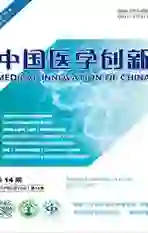预见性护理风险管理对降低早产儿医院感染发生率的影响研究
2017-06-08黄银娟
黄银娟

【摘要】 目的:研究运用预见性护理风险管理对降低早产儿医院感染发生率的影响。方法:选择2015年7月-2016年12月本院新生儿科收治的早产儿146例,根据护理方案的不同分为观察组(n=72)和对照组(n=74)。对照组早产儿给予常规护理,观察组早产儿在此基础上实施预见性护理风险管理方式。观察两组早产儿发生院内感染的情况,比较两组护理不良事件的发生率以及家属满意度的调查。结果:观察组早产儿医院感染发生率为8.33%,明显低于对照组的20.27%(P<0.05);而观察组护理不良事件发生率为20.83%,低于对照组的39.19%(P<0.05),观察组早产儿家属满意度为84.72%高于对照组的66.22%(P<0.05)。结论:基于预见性护理的护理风险管理模式能有效降低早产儿发生院内感染的几率,并增加护士在进行护理时的主动性,减少临床护理时发生护理风险事件的几率,且家属满意度高,有利于缓解医患关系,值得医院新生儿科临床推广。
【关键词】 预见性护理; 护理风险管理; 早产儿; 医院感染
Effect of Predictive Nursing Risk Management on Reducing the Incidence of Nosocomial Infection/HUANG Yin-juan.//Medical Innovation of China,2017,14(14):074-078
【Abstract】 Objective:To study the effect of predictive nursing risk management on reducing the incidence of nosocomial infection in premature infants.Method:From July 2015 to December 2016 in our hospital 146 premature were selected and divided into the observation group(n=72) and the control group(n=74) according to the different nursing plans,the control group was given routine nursing,while the observation group was given routine treatment and predictive nursing risk management.The incidence of nosocomial infection of two groups was observed,and the incidence of adverse events and family satisfaction of two groups were compared.Result:The infection rate of the observation group was 8.33%,it was significantly lower than that of the control group(20.27%)(P<0.05).The nursing adverse events of the observation group was 20.83%,it was less than that of the control group (39.19%)(P<0.05),the premature family satisfaction of the observation group was 84.72%,it was higher than that of the control group(66.22%)(P<0.05).Conclusion:The nursing risk management model based on predictive nursing can effectively reduce the risk of nosocomial infection in preterm infants and increase the nurses' initiative in nursing care,reduce the chance of nursing risk events in clinical nursing,and has high family satisfaction,helps to ease the tension between doctors and patients.
【Key words】 Predictive nursing; Nursing risk management; Premature infant; Nosocomial infection
First-authors address:No.1 Maternal and Child Health Hospital of Huizhou City,Huizhou 516001,China
doi:10.3969/j.issn.1674-4985.2017.14.020
院內感染是指患者在住院期间在院内获得的感染,以及在医院获得感染而处于潜伏期,出院后出现症状的感染[1]。早产儿因自身免疫力低下、各器官功能发育尚不完全、环境器具或医护人员携带病原体等原因发生院内感染[2-3]。护理风险管理是指评估、识别、干预护理人员在对病人进行护理操作时可能产生伤害的风险[4]。进行预见性护理风险管理的目的在于明确护护理风险所在、掌握其规律、提高防范意识以及有效地回避护理风险,为患者提供优质的护理[5-6]。故本院实行预见性护理风险管理,以期减少早产儿发生院内感染的几率,现报告如下。
